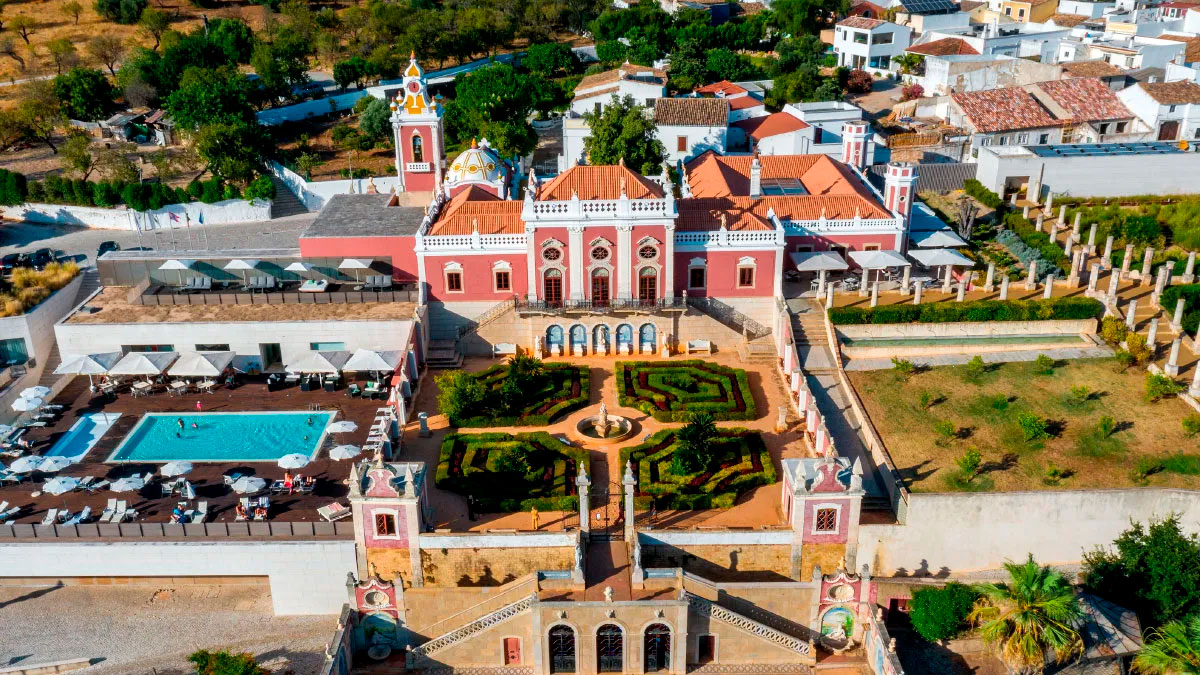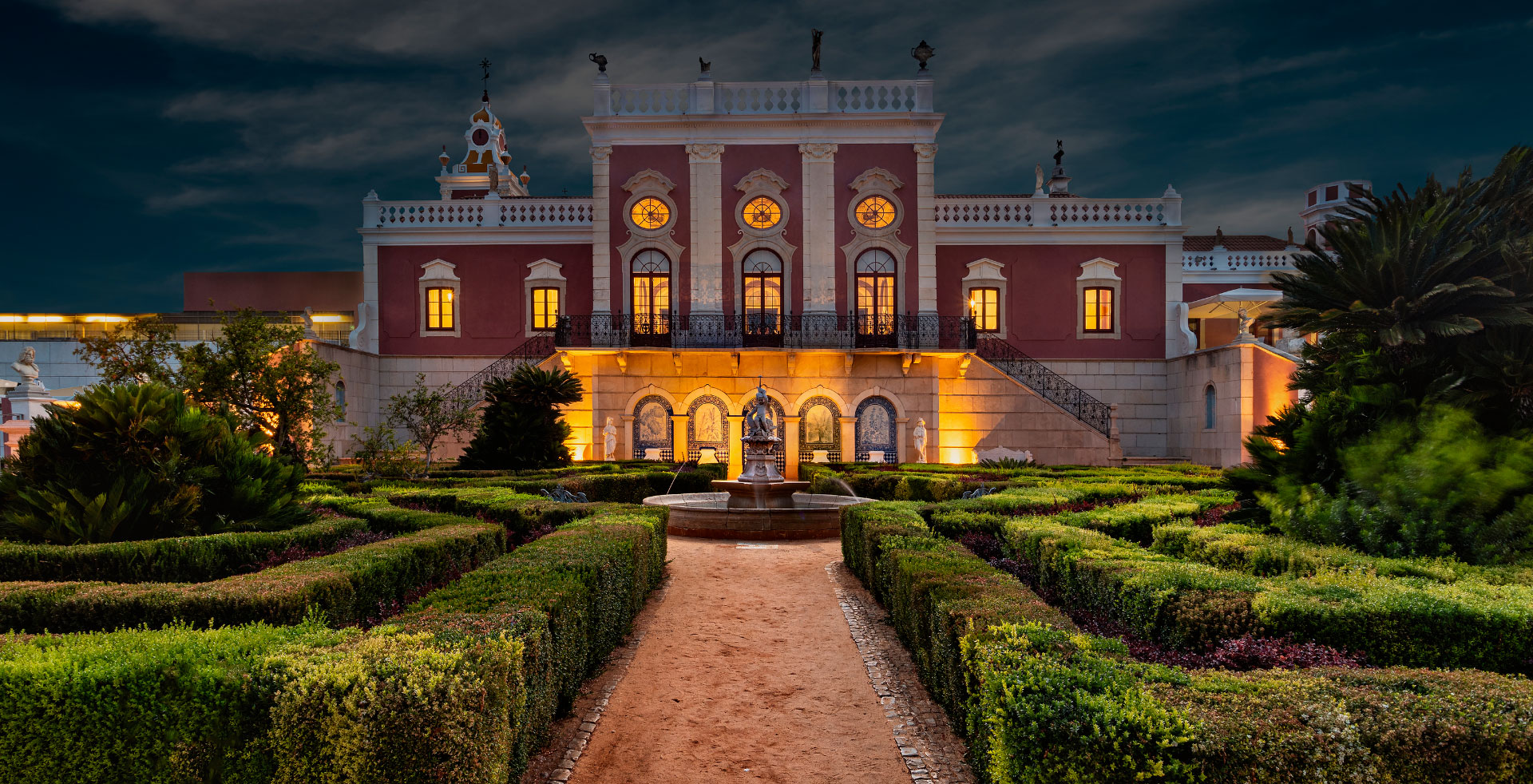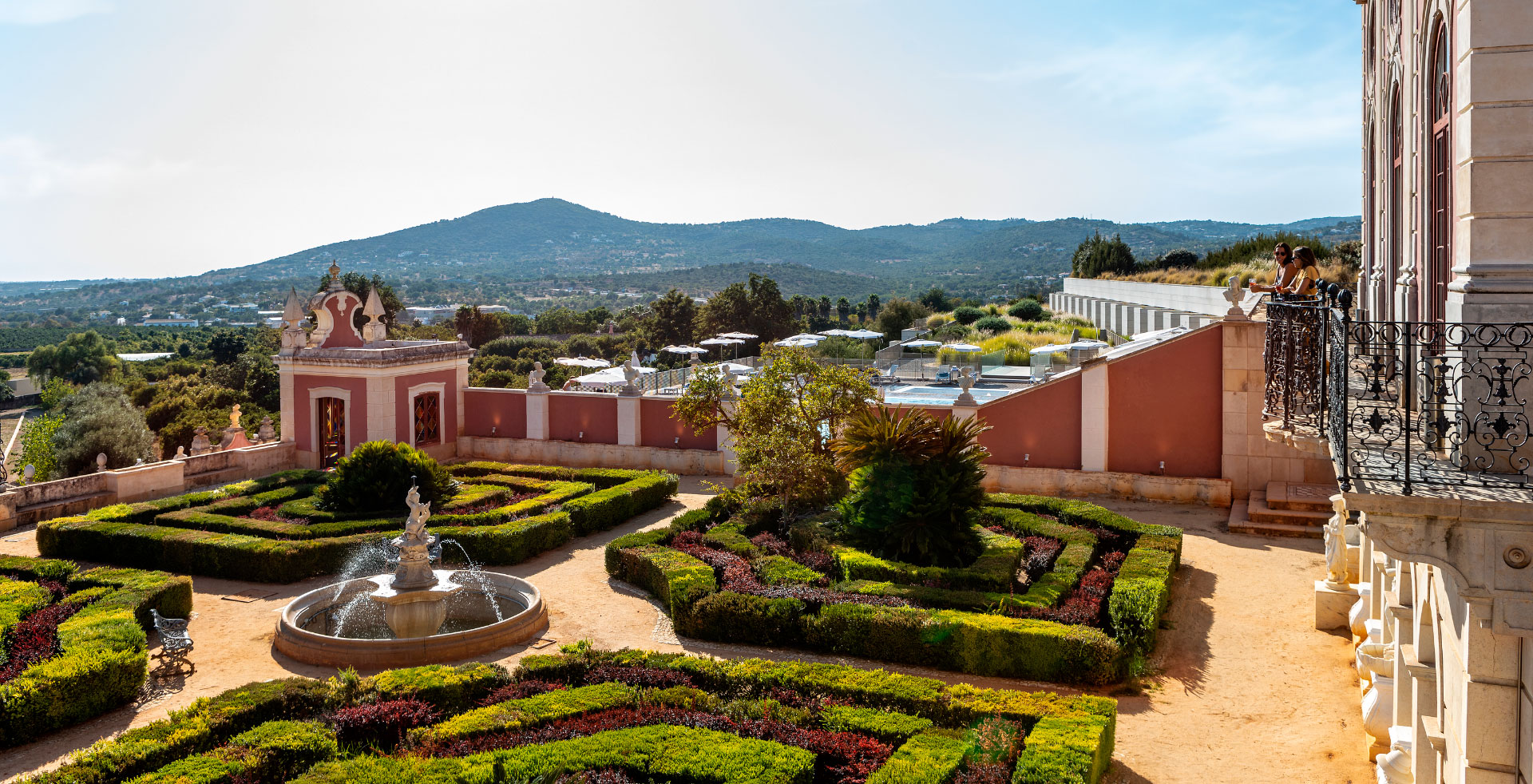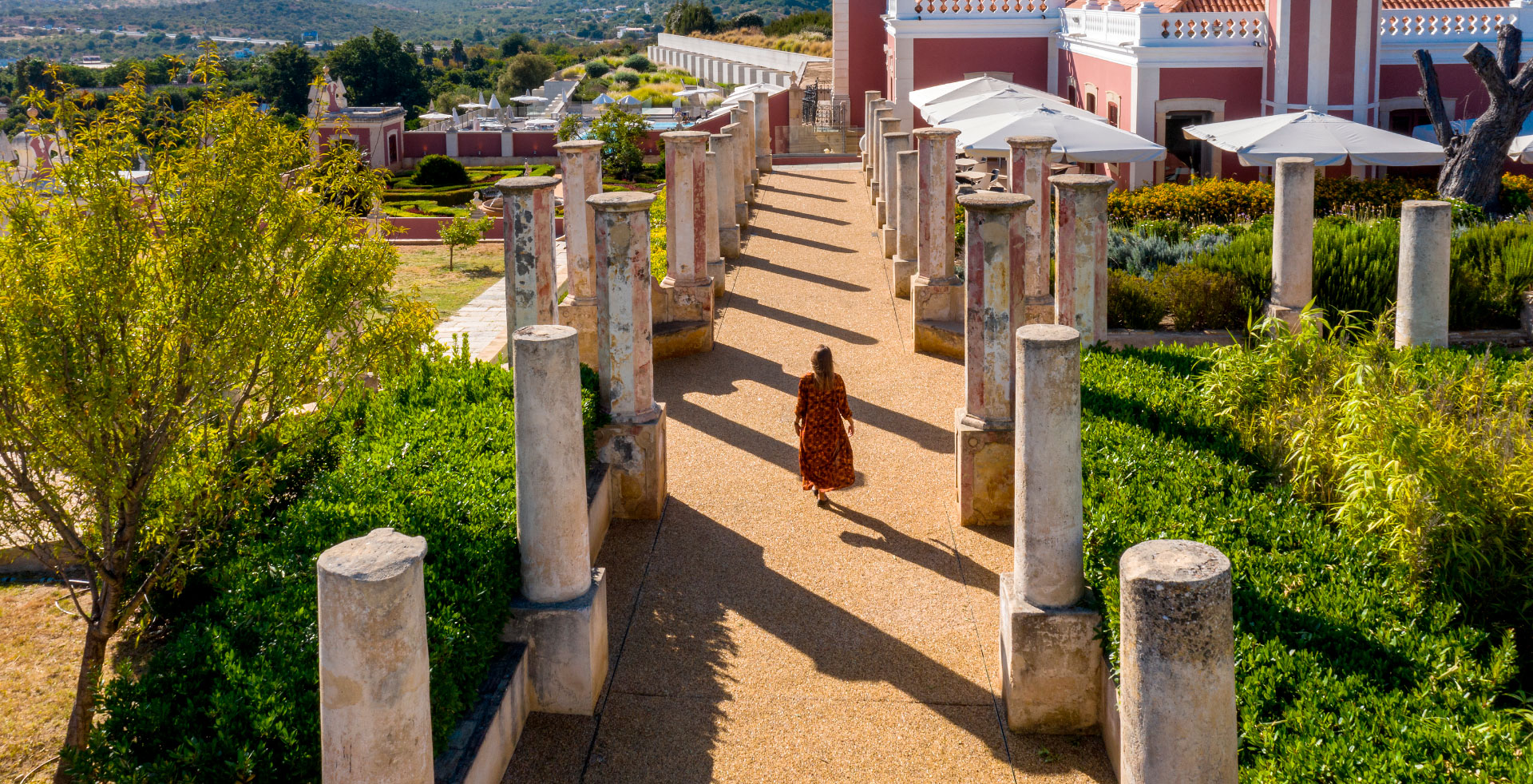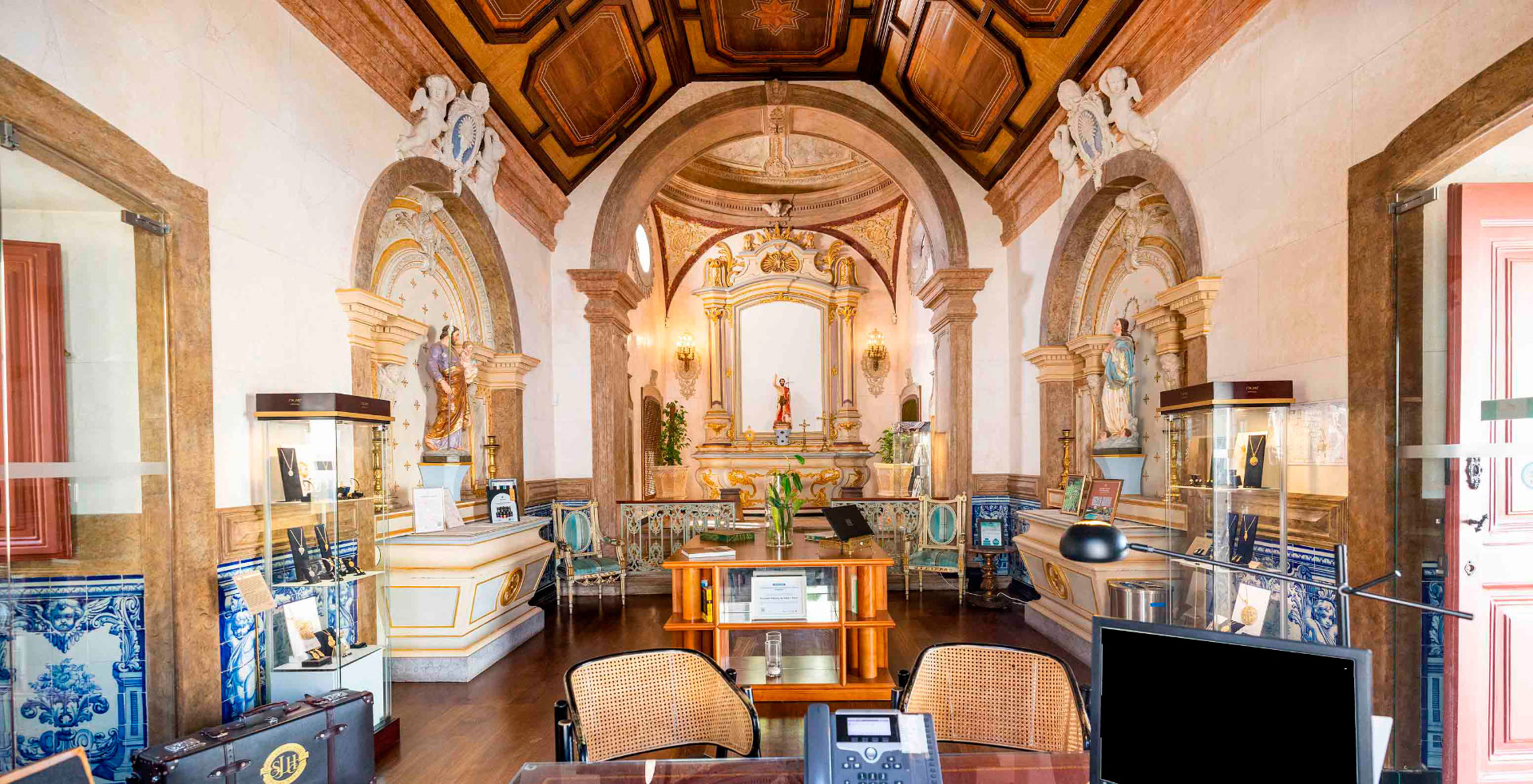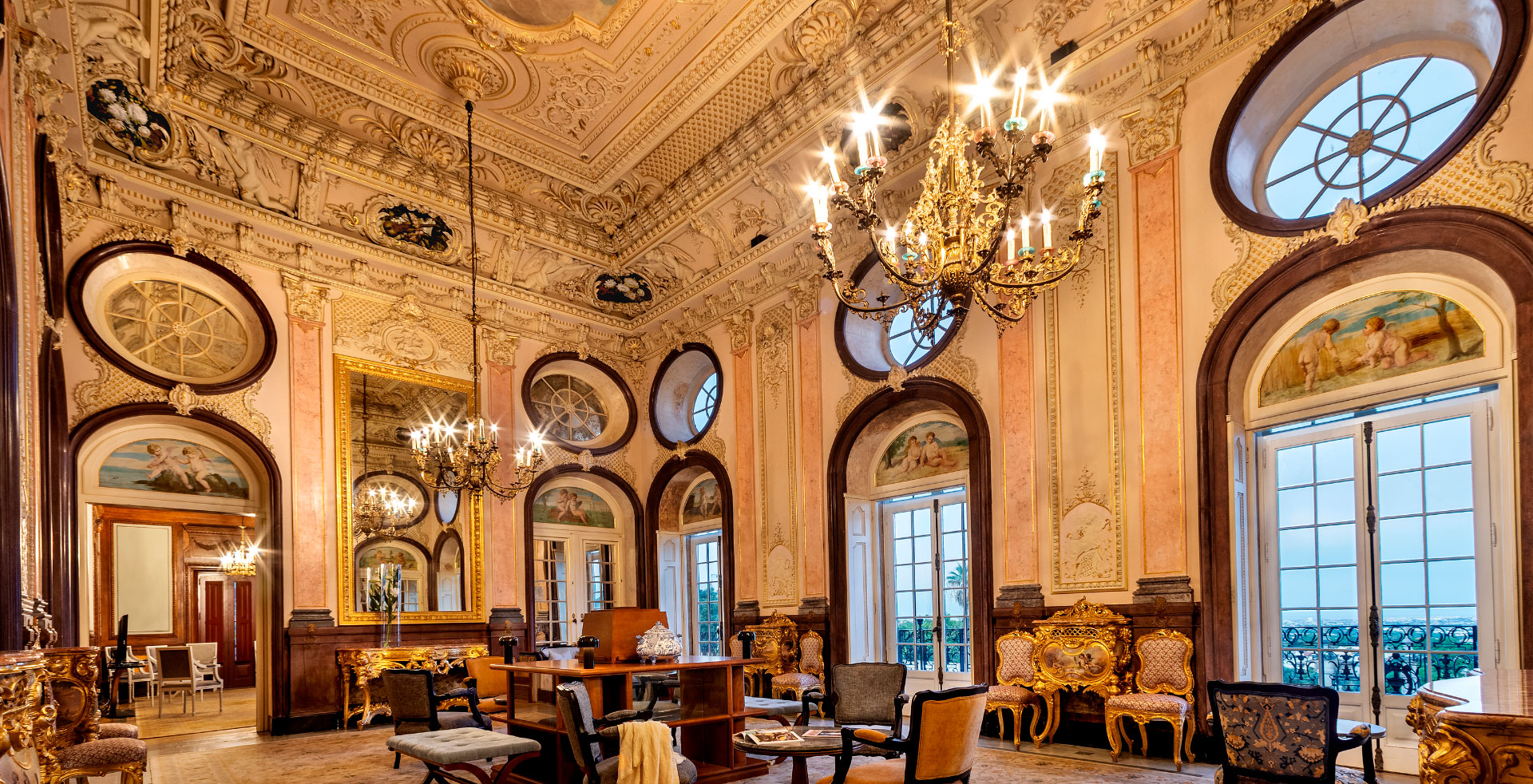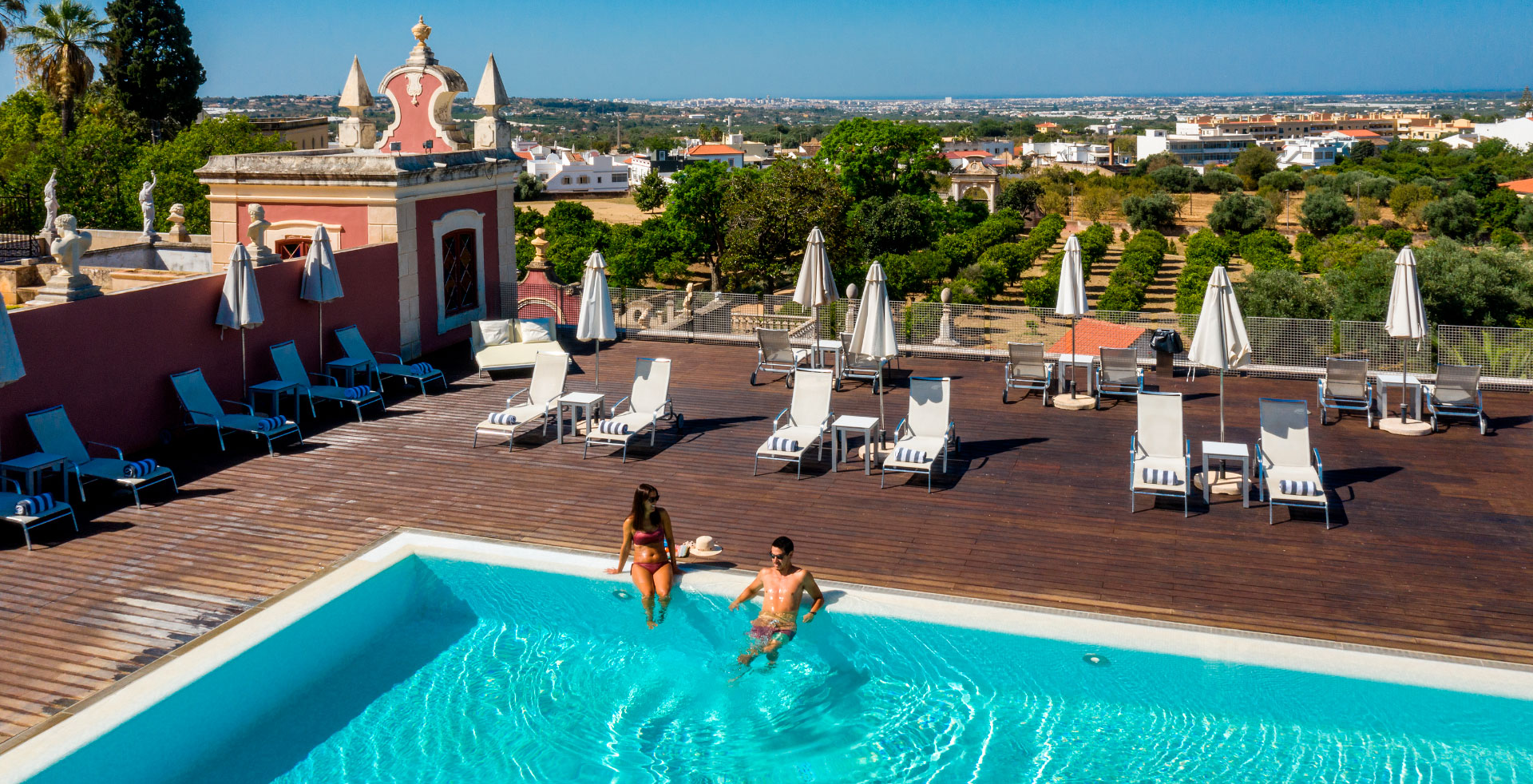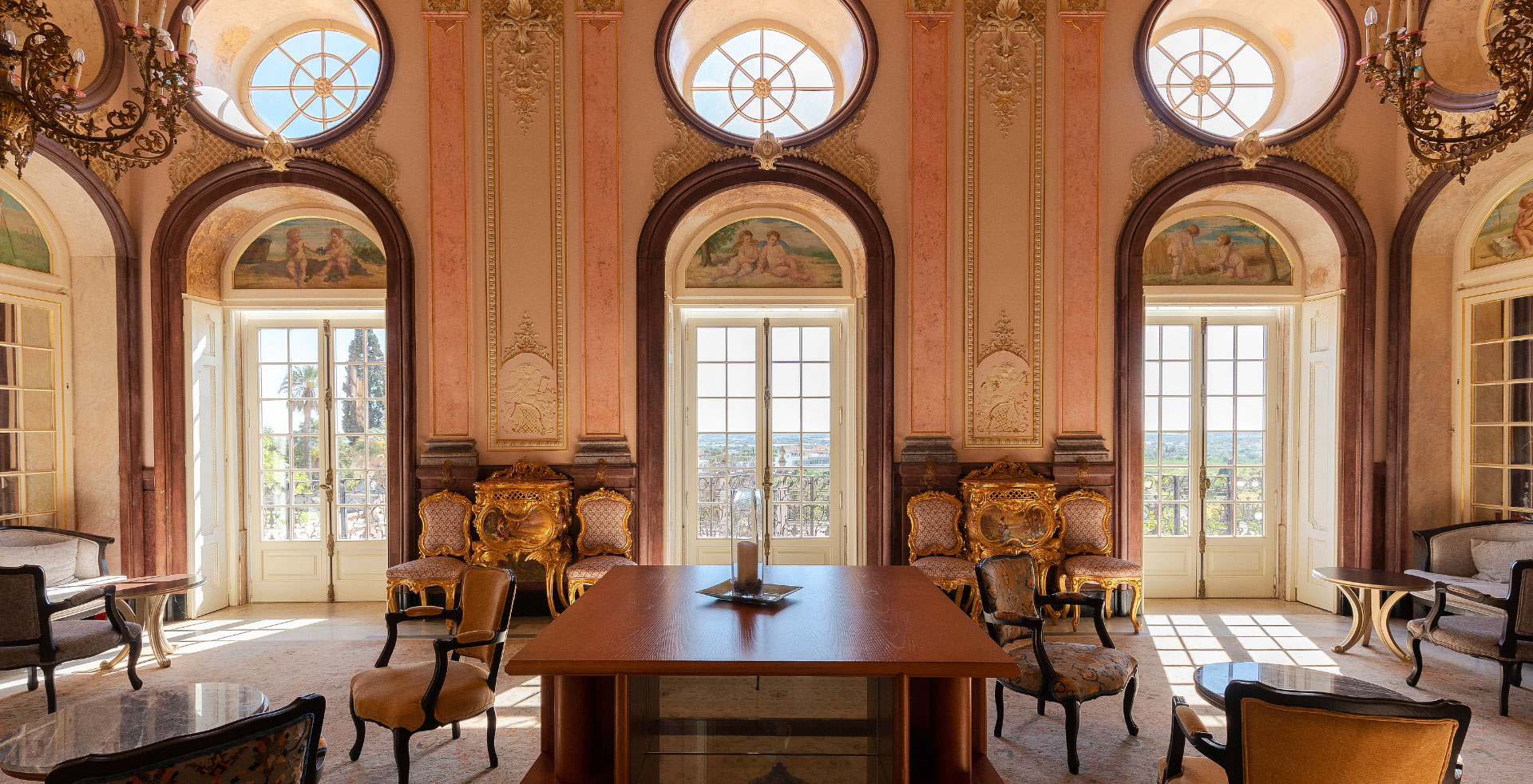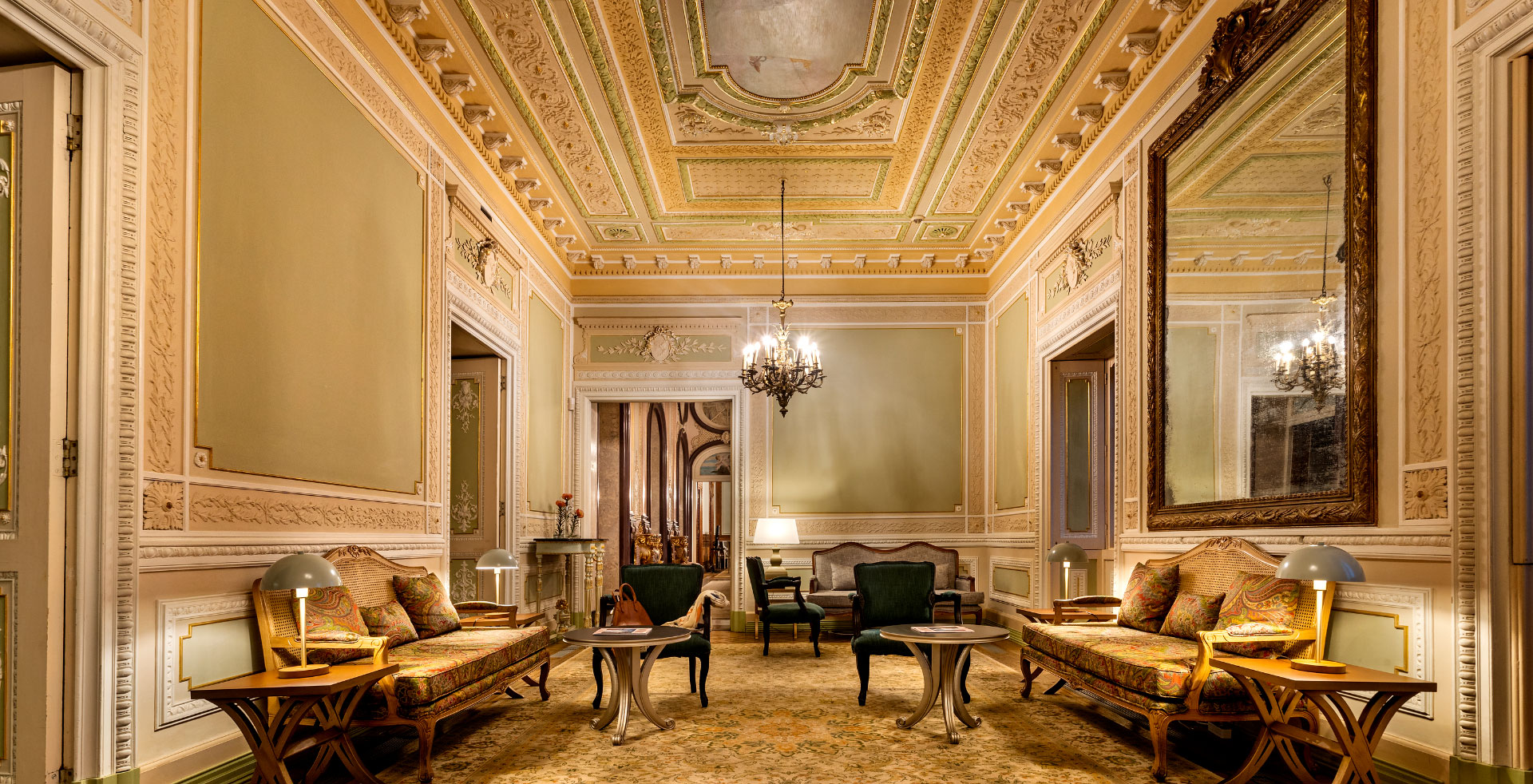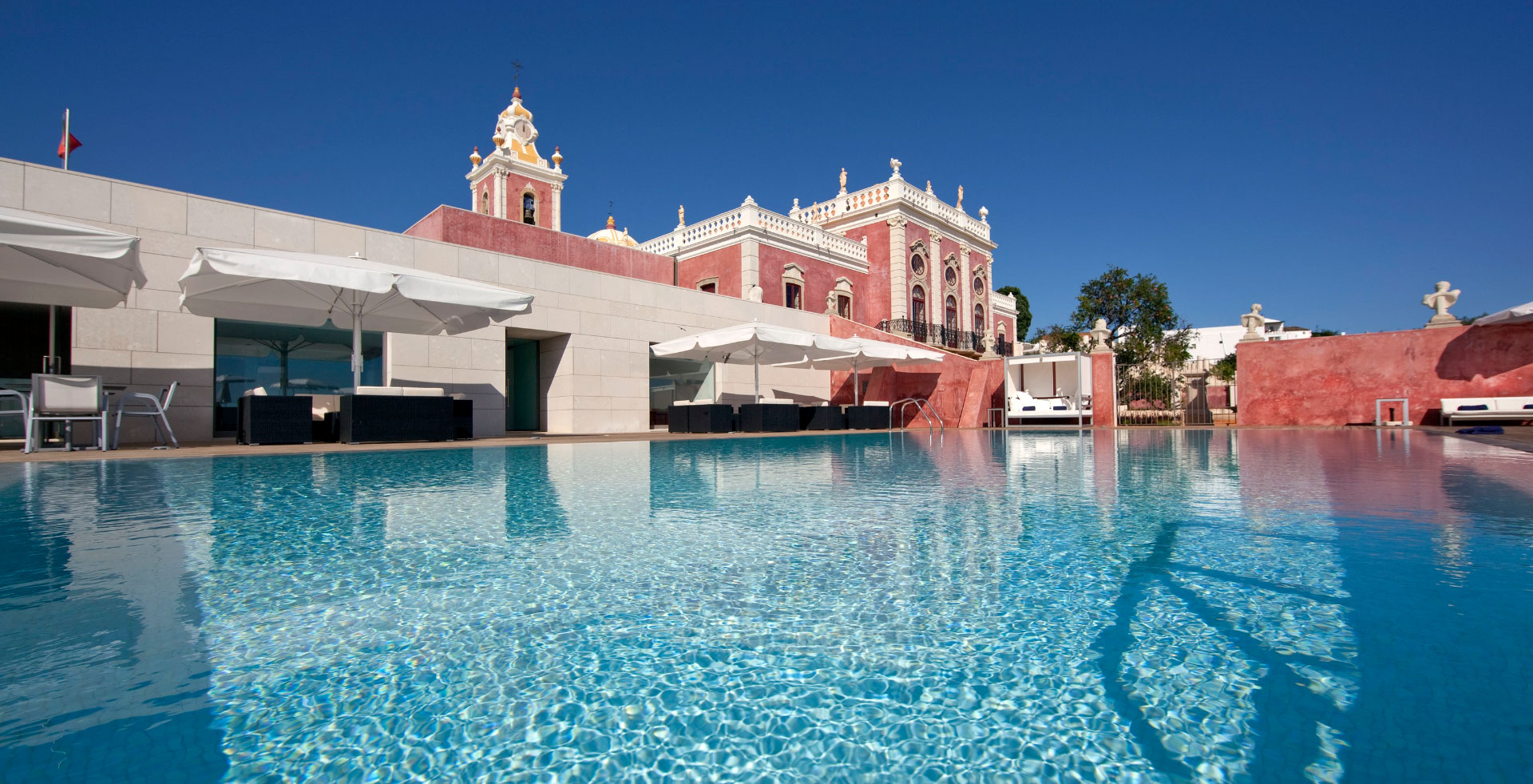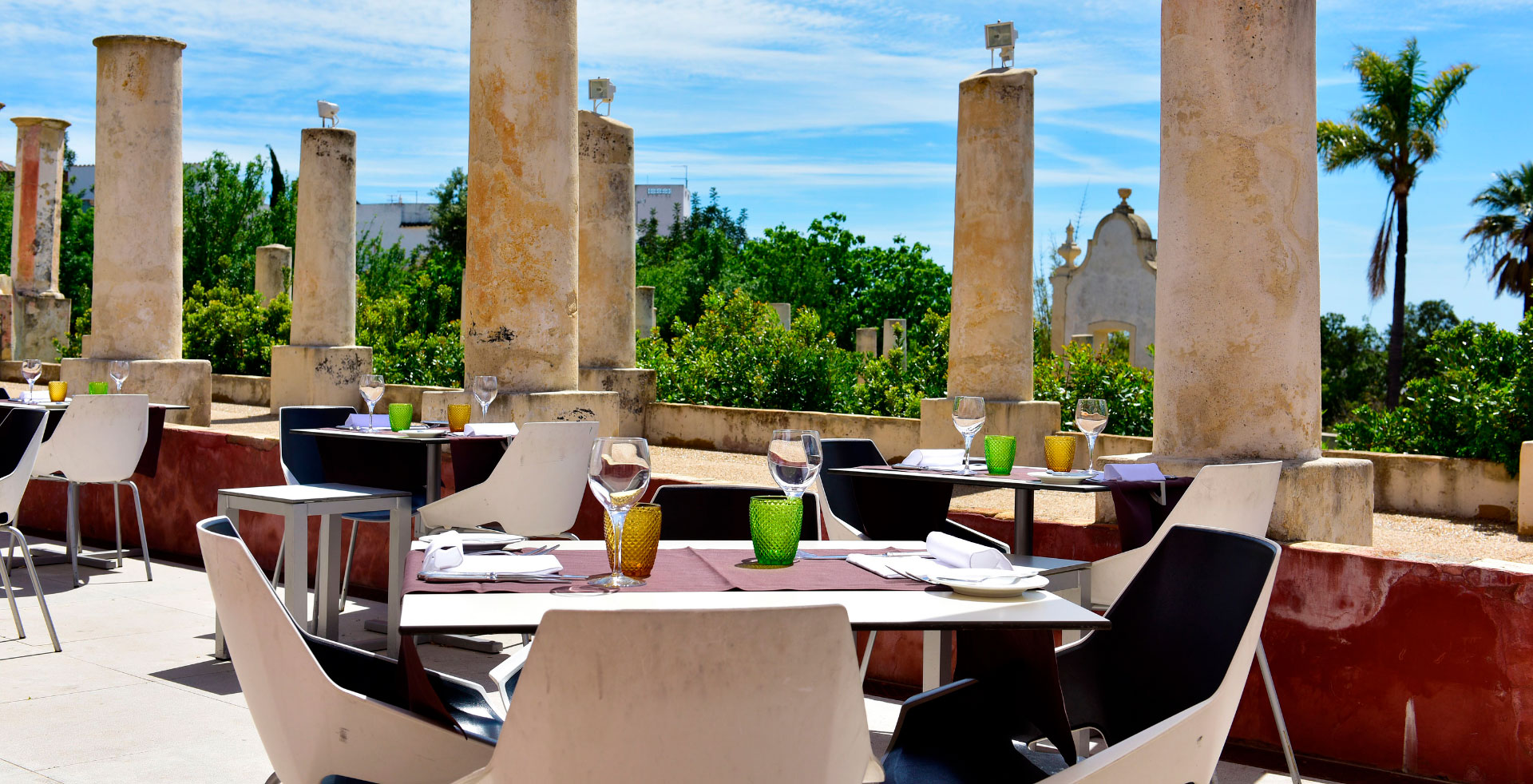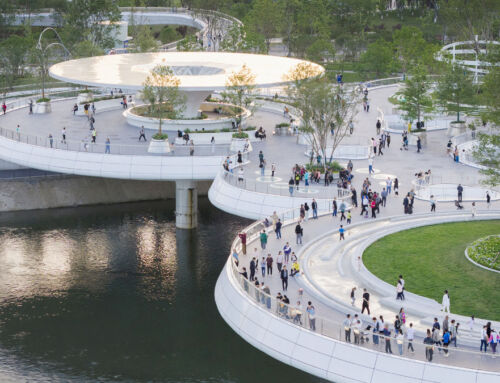Since the 1940s, Pousadas de Portugal has been a network of 44 historic luxury hotels spread across the country. Owned by the Portuguese state, it is the Pestana Pousadas Group that currently manages this collection of accommodations. One of them is the Pousada Palácio Estoi hotel. Located in the heart of the Algarve, just 10 km from the city of Faro in southern Portugal, Pousada Palácio Estoi deserves a place in this article, which we dedicate to the most special hotels in the world. After all, it is an eclectic architectural treasure, a meticulously restored 18th-century palace that combines Baroque, Neoclassical and Romantic influences.
Architecture of the Pousada Palácio Estoi hotel
Organised in a U-shape around the Jardim do Carrascal —the former entrance to the palace— Pousada Palácio Estoi has a sober exterior that contrasts with the decorative richness of its interiors. However, the composition of the main façade is dominated by a higher central section, evoking the Louis XV style—that is, the Rococo architectural style—with counter-curved pediments, Ionic pilasters and large oculi piercing it, topped with a balustrade supporting statues and vases. The side wings, on the other hand, are simpler in design.
Upon crossing the threshold, we discover luxurious and refined palatial rooms. On the ceilings of the Salón Noble, the heart of the palace, the painter Adolfo Greno let his brush fly under skies of mythological echoes. The large hall, richly decorated with mouldings, pilasters, winged figures, gilded stucco, festoons and garlands, and with the same portholes that we discovered on the façade, now gives us a glimpse of an unrepentant, determined and splendid French Rococo style, with lacquered furniture that seems to have been taken directly from Versailles.
Not far from there, the old chapel, now converted into the hotel reception, retains its sacred atmosphere intact, with typical Portuguese tiles, in this case in the Baroque style, semicircular stone arches, under a dome where the Ascension of Christ, by Francisco Luís Alves, seems to defy the laws of gravity.
The gardens, a masterpiece of Portuguese landscaping, cascade down three levels. On the upper level, two viewpoints overlook the geometric flowerbeds below, where marble busts, perhaps illustrious figures from times gone by, seem to watch over the hedges—although some gaze distractedly at the horizon—and wonder about the thoughts crossing the minds of the relaxed guests. A hydraulic system inherited from the Arab tradition feeds the fountains and ponds that adorn these gardens. In particular, the magnificent Fonte de Ossónoba, a sculptural ensemble in Carrara marble in which mermaids and nymphs, oblivious to the human world, recreate themselves idly and indolently among the water features.
History of the Pousada Palácio Estoi hotel
The origins of this magnificent hotel date back to the 18th century, when Marshal Francisco de Pereira Coutinho, a nobleman linked to the Portuguese court, acquired the estate it occupies today. However, it was his son, Fernando de Carvalhal e Vasconcelos, who began the transformation of the property into a palace in the 19th century. To do so, he drew inspiration from the romanticism of the Palácio da Pena in Sintra. The work, interrupted by successive deaths in the family—the first of which was Carvalhal e Vasconcelos himself—was not completed until the end of the 19th century.
It was then that the pharmacist and businessman José Francisco da Silva — later named Viscount of Estoi by King Carlos I — acquired the property, which was in a state of semi-abandonment. Between 1893 and 1909, Da Silva invested a fortune in hiring Portuguese and Italian artists to restore and expand the palace and decorate its rooms with frescoes, tiles and French-style furniture. The inauguration, in May 1909, was a major social event, with three days of celebrations that included masses, concerts and banquets.
After the viscount’s death in 1926, the palace passed through several owners and fell into progressive disrepair. In the 1960s, there was already talk of converting it into a museum or pousada. However, it was not until 1987 that the Faro City Council acquired it to save it. After a decade of restoration work, architect Gonçalo Byrne led its transformation into a hotel, with the utmost respect for its historical essence, while landscape architect João Ceregeiro was responsible for restoring the gardens to their former splendour. At the same time, they integrated the annex with 63 rooms, a spa and an outdoor swimming pool, which completes the current hotel complex.
Just 13 km from the beaches of the Algarve and close to the Ria Formosa Natural Park, the palace is also a great starting point for visiting the Roman ruins of Milreu or the historic centre of Faro. A living monument where past and present come together, Pousada Palácio Estoi is an ideal hotel for travellers seeking culture, relaxation and a touch of royalty. An Algarve palace that proves that history, when carefully preserved, is the greatest luxury of all.
Sources: Wikipedia, Pousadas de Portugal, Pousada Palácio Estoi, Secret Places.
Images: Pousada Palácio Estoi.


